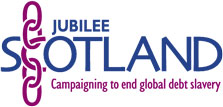Case Study:
Zambia
As a condition of IMF-supported programmes, the Zambian government
has had to restrain its total spending for more than two decades.
It has been forced to set a cap on wages and salaries expenditure.
This has been set at a maximum level of 8.1% of GDP.
HEALTH
As a consequence the health system in Zambia has been slowly collapsing.
Zambia has one of the worst rates for maternal and child mortality
in the world and the effects of HIV/AIDS inside and outside the
health sector severley constrain the quality of service provision.
Zambia’s health system faces chronic and severe staff shortages
with high attrition rates due to HIV/AIDS, migration and poor
wages and conditions. There is one physician to every 14,000 people.
Compare this to 1:600 in the UK.
EDUCATION
The education system is under similar strains with the IMF setting
wage ceilings for teachers. Zambia’s education system is
being undermined by a severe shortage of teachers. Not because
there are not enough trained teachers but because the IMF has
said the government can’t afford to hire them. Far from
increasing the number of teachers to keep pace with the growing
demand for free primary education, numbers actually fell between
2002 and 2003.
Finally this year Zambia was able
to employ 4,500 new teachers with the money freed up from debt
relief agreed at Gleneagles.
Debt Relief
In April of this year the government of Zambia introduced free
health care for people living in rural areas, scrapping fees which
for years had made health care inaccessible for millions. This
is being financed using money from the debt cancellation and aid
increases agreed at the G8 in Gleneagles in July 2005. Zambia
received $4 billion of debt relief; money it is now investing
in health and education.
Spending on education has increased
by 2.9 % enabling Zambia to employ 4,500 teachers.
Problems remain, there are not enough
skilled health professionals to meet the new demands on the system
and the government has warned that fiscal discipline will be maintained.
It seems, the IMF still has a stranglehold over Zambia. Even after
20 years of painful economic reforms the government aims to maintain
the tight control on spending expected under HIPC.
Read the Honduras
case study
Back to take action
 Download
the Oxfam report In
the Public Interest
Download
the Oxfam report In
the Public Interest

